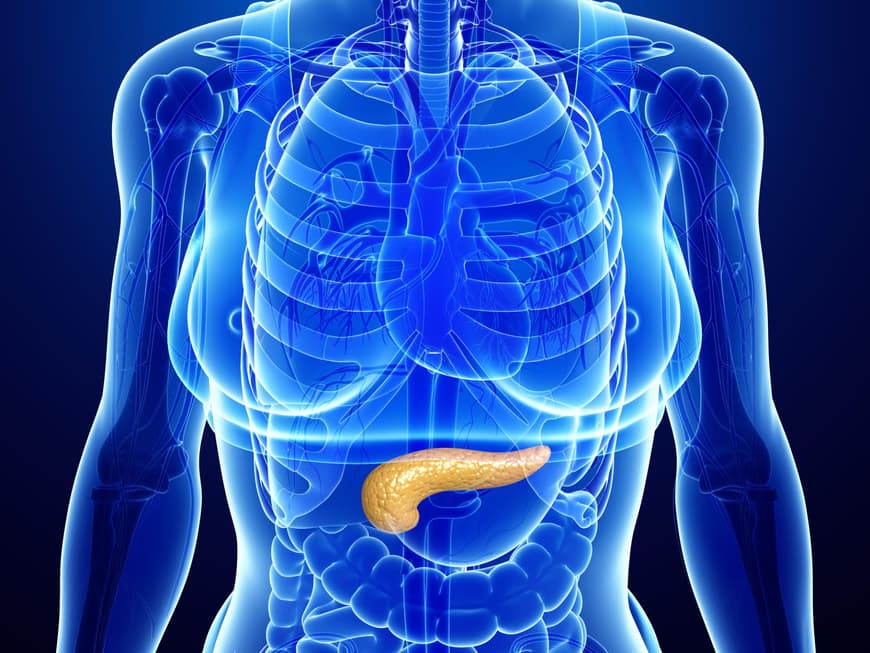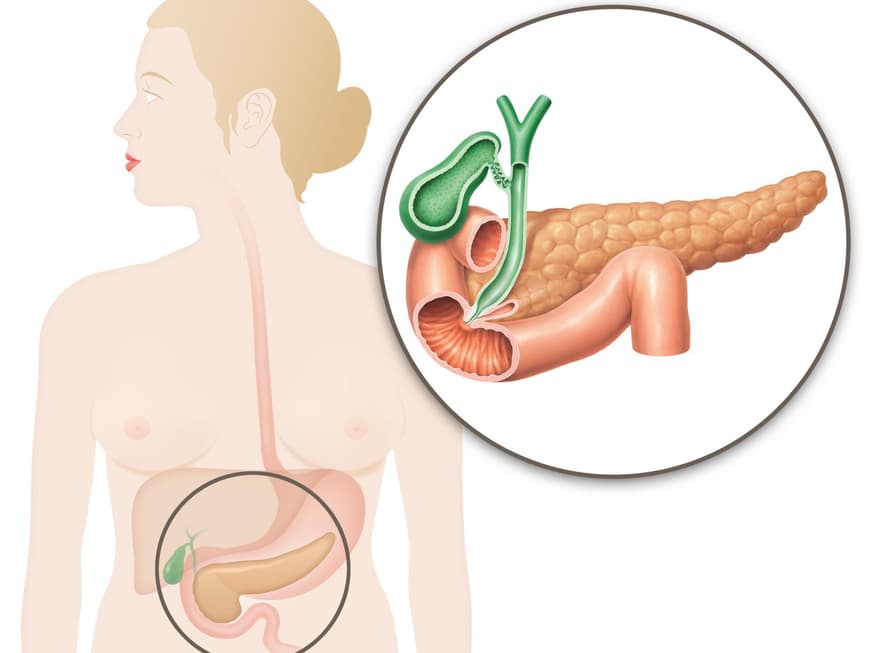The medical term for this gland is pancreas. The function of the pancreas is to produce insulin - as most people know. But this small organ has a whole host of other tasks.
Pancreas: various functions
The pancreas is about 20 centimetres in size and is located in the upper abdomen between the stomach, spleen and liver. The organ is divided into the pancreatic head, the pancreatic body and the pancreatic tail. Although the pancreas looks like a single organ, it consists of very different cells with completely different functions.
It produces enzymes
The largest part of the pancreas consists of several thousand lobules. They contain cells that produce one to two liters of digestive juice every day. This juice is passed into the small intestine, where it releases enzymes. They break down fats, proteins and carbohydrates from food and from here they enter the bloodstream.
It produces hormones
Around two percent of the cells in our pancreas have a different task. Their function is toproduce hormones that are released directly into the blood. One of these is the well-known insulin, which lowers blood sugar levels. Less well known are glucagon and ghrelin: glucagon increases blood sugar levels, ghrelin stimulates the appetite. A complicated interplay.
What does the pancreas do when it becomes ill?
Inflammation is often caused by gallstones that block the pancreatic duct. This prevents the digestive juices from flowing out and the gland tries to digest itself, so to speak. Alcohol can also trigger inflammation. Symptoms: severe upper abdominal pain. In the worst case, there is a risk of circulatory shock, blood poisoning or kidney failure. See a doctor immediately if you feel pain. Inflammation is treated in hospital.


